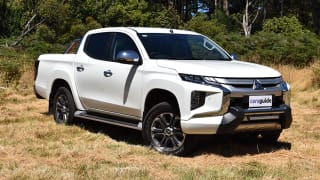Our Arctic White test vehicle is the S6+ single cab-chassis 4x4, which like all Pik-Up models is available only with a 2.2-litre four-cylinder turbo-diesel and six-speed manual transmission. It comes only as a two-seater with a genuine accessory general-purpose aluminium (GPA) tray for a drive-away price of only $30,990.
Our S6+ example is fitted with some other Mahindra accessories including the optional heavy-duty aluminium (HDA) tray and 16-inch black alloy wheels with 245/75 R16 tyres, plus a 2.5-tonne tow-bar, engine snorkel, bull-bar and SandGrabber floor mats, which raises the drive-away price to $37,990.

So, for less than $31K drive-away for the standard S6+, it's frugal with standard features but it does have some useful kit including automatic central-locking and keyless entry, AM/FM radio (with tiny non-touchscreen) and Bluetooth connectivity, non-adaptive cruise with steering wheel controls, USB port, 12-volt accessory plug and overhead reading lamps.
The steering wheel is only height-adjustable and it has a mechanical handbrake lever. However, by stark contrast, it also has fold-down padded inboard armrests on both seats. This unique and welcome comfort feature has not been offered on any one-tonne ute we've tested (not even as an option) yet here it's standard equipment. Go figure.



















